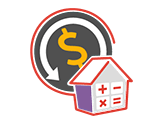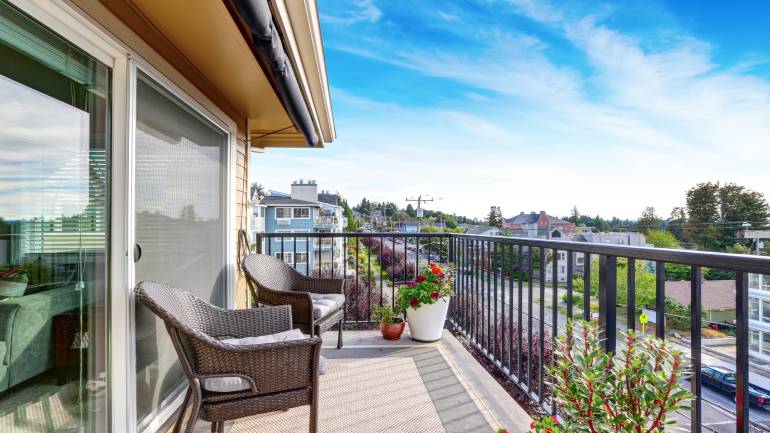
Remember that famous saying by Benjamin Franklin on how nothing is certain in life, except for death and taxes? Well, he’s not wrong! In Singapore, Seller’s Stamp Duty (SSD) is a fee that you’ll have to pay even when you’re selling your property.
But relax, there are exemptions to this (more on this later), but let’s get to basics first shall we?
What is Seller’s Stamp Duty (SSD)?
SSD is a property tax that a property seller has to pay when he/she sells a property within the 3-year holding period (number of years that you own a property). However, this tax will only be applicable to you if you bought a residential property/land on, or after 20 February 2010.
Payable to the Inland Revenue Authority of Singapore (IRAS), SSD was introduced in 2010 as a property cooling measure to curb the act of flipping property for profit. IRAS believed that if left unmanaged, widespread property flipping could drive property demand and prices up, potentially contributing to a bubble.
In addition, SSD will be applicable if you acquired a property through a property transfer in case of a divorce (Stamp Duties (Matrimonial Proceedings) Remission Rule) , inheritance or a transfer of a HDB flat within the family (Stamp Duties (Transfer of HDB Flat Within Family) Remission Rule).
If you’re an HDB flat owner who’s looking to sell your flat after fulfilling the Minimum Occupation Period (MOP) of 5 years, you won’t have to pay SSD.
How much do I need to pay for Seller’s Stamp Duty?

IRAS has a comprehensive table of Seller’s Stamp Duty rates on their website, and we’ve compiled them here below for your convenient reference.
|
Date of Purchase |
Holding Period |
SSD rate payable |
|
Between 20 Feb 2010 and 29 Aug 2010 (all inclusive) |
Up to 1 year |
1% on first $180,000 2% on next $180,000 3% on the remainder |
|
More than 1 year |
No SSD payable |
|
|
Between 30 Aug 2010 and 13 Jan 2011 (all inclusive) |
Up to 1 year |
1% on first $180,000 2% on next $180,000 3% on the remainder |
|
More than 1 year and up to 2 years |
0.67% on first $180,000 1.33% on next $180,000 2% on the remainder |
|
|
More than 2 years and up to 3 years |
0.33% on first $180,000 0.67% on next $180,000 1% on the remainder |
|
|
More than 3 years |
No SSD payable |
|
|
Between 14 Jan 2011 and 10 Mar 2017 (all inclusive) |
Up to 1 year |
16% |
|
More than 1 year and up to 2 years |
12% |
|
|
More than 2 years and up to 3 years |
8% |
|
|
More than 3 years and up to 4 years |
4% |
|
|
More than 4 years |
No SSD payable |
|
|
On and after 11 Mar 2017 (Latest Seller’s Stamp Duty rates) |
Up to 1 year |
12% |
|
More than 1 year and up to 2 years |
8% |
|
|
More than 2 years and up to 3 years |
4% |
|
|
More than 3 years |
No SSD payable |
The total SSD that you’ll need to pay is calculated by applying the applicable rate on whichever is higher for the residential property in question:
- Selling price, or
- Current market value
As evident from the table above, these 3 factors also play a part in determining the total SSD you’ll need to pay:
- When the transaction takes place
- The SSD percentage rate
- The holding period
What’s more, you’ll notice that the earlier you sell your property, the higher the SSD you’ll need to pay.
Let’s take a look at a hypothetical case example to help you better understand how SSD works.
Case example:
Marie bought her residential property on 22 April 2017.
She then sold it on 25 February 2018 for $2,200,000. Since the holding period is less than 1 year, the SSD rate for her property would be 12%.
Therefore, the SSD that Marie would have to pay is:
$2,200,000 x 12% = $264,000

Tools and Calculators
Want an easy way to calculate property stamp duties? Use our handy stamp duty calculator here.
As you can see, SSD can come up to quite a huge sum of money, so be sure to check how much SSD you’ll need to pay before you decide to sell your property.
If you’re looking to earn a profit from your property sale, do remember to take the SSD into account.
Are there any exemptions from Seller’s Stamp Duty?
There are scenarios in which you won’t need to pay SSD.
According to IRAS, property sellers will be exempted from paying SSD under the following situations:
- Licensed housing developers governed under the Housing Developers (Control and Licensing) Act need not pay SSD when selling residential properties developed by them.
- Public authorities (e.g. HDB and JTC) in exercising their functions and duties need not pay SSD when selling residential properties.
- Residential property owners need not pay SSD when their properties are acquired by the Government under the Land Acquisitions Act.
- Individuals who own residential properties need not pay SSD if they have been adjudged a bankrupt and are required to dispose of their residential properties as a result of bankruptcy.
- Companies that own residential properties need not pay SSD when disposing of their residential properties upon involuntary winding up.
- Foreigners need not pay SSD when they have to sell their residential properties as required under the Residential Properties Act.
- For HDB flat sellers or transferors who bought or acquired their flats on or after 30 Aug 2010 and their flats have been identified for Selective Enbloc Redevelopment Scheme (SERS), but sell their flats in the open market before HDB claims them.
- HDB flat sellers or transferors who return their flats to HDB as a result of re-possession by HDB or under the SERS.
- A person who owns an HDB flat, inherits an HDB flat, and is required under the HDB’s regulations to dispose of either the inherited HDB flat or the existing HDB flat. This exemption applies to disposal of flats on or after 18 Dec 2015.
- A person who owns a non-HDB flat, inherits an HDB flat, and is required under the HDB’s regulations to dispose of the inherited HDB flat. This exemption applies to disposal of flats on or after 18 Dec 2015.
- A person who owns an HDB flat marries a person who owns another HDB flat and the couple is required under HDB’s regulations to dispose of either one of the HDB flats. This exemption applies to disposal of flats on or after 18 Dec 2015.
What are the other types of property stamp duty in Singapore?
It’s not just property sellers that are subjected to tax, some buyers will also need to pay tax when they buy properties in Singapore. These are known as Buyer’s Stamp Duty (BSD) and Additional Buyer’s Stamp Duty (ABSD)
Similar to SSD, both were introduced by the government as cooling measures to ensure that housing remains affordable for all Singaporeans.
Buyer’s Stamp Duty (BSD)
BSD is payable when you buy or acquire a property. The applicable rate will apply to whichever is higher:
- The purchase price of the residential property, or
- The market value of the residential property

Buying
Keen to learn more about Buyer’s Stamp Duty? Read more here.
Additional Buyer’s Stamp Duty (ABSD)
The ABSD is levied on top of the BSD, and applies to individuals buying additional residential property:
- For Singaporean Citizens, ABSD will apply for the second property purchased, and all subsequent property purchases.
- For Permanent Residents, ABSD will apply to all purchases, with the first purchase at a lower rate.
- For foreigners and corporate entities, ABSD will apply to all purchases at a similar rate, including the first one.

Buying
Read more about Additional Buyer’s Stamp Duty here.
Conclusion
We hope this guide has helped you gain a better understanding of what Seller’s Stamp Duty in Singapore is all about.
While selling your home can potentially bring in tidy returns, do remember to factor in possible expenses such as Seller’s Stamp Duty, and also fees for your property agent if you’re looking to hire one!
Other FAQs related to Seller’s Stamp Duty
Does the Seller Pay Stamp Duty?
SSD is a property tax that a property seller has to pay when he/she sells a property within the 3-year holding period (number of years that you own a property).
What is SSD in Property?
Seller’s Stamp Duty, or SSD is a tax that a property seller has to pay if he/she sells the property within three years of owning it. It is only be applicable if you bought a residential property/land on, or after 20 February 2010.
How much is Seller’s Stamp Duty?
1% on first $180,000, 2% on next $180,000 and 3% on remainder.

Find Property
Looking to sell your HDB flat to upgrade to a condo, be sure to check out our listings of condos for sale here!

Property Guides
Click HERE to get more interesting guides like this, or check out PropertyGuru.

